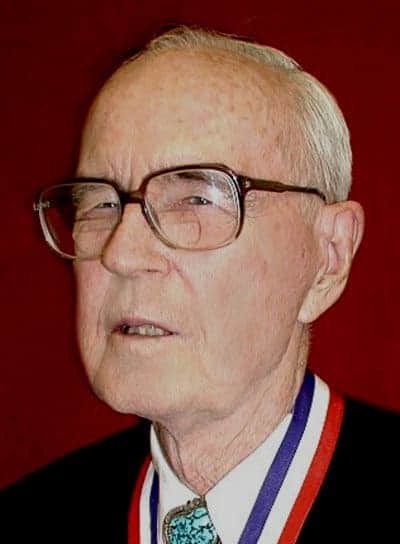
Willis Lamb, who won the 1955 Nobel Prize in Physics “for his discoveries concerning the fine structure of the hydrogen spectrum”, died last week at the age of 94.
In 1947, Lamb discovered the famous “shift” in the hydrogen spectrum that bears his name. The Lamb shift provided important experimental evidence for the then emerging theory of quantum electrodynamics (QED).
Lamb was born on 12 July, 1913 in Los Angeles, California and like many physicists of his generation, he worked on radar technology during the Second World War. After the war, he turned his microwave expertise to the study of the hydrogen atom.
While working at Columbia University in New York, Lamb found that the 2S1/2 electron energy level in hydrogen was slightly higher than the 2P1/2 energy level. This shift was not predicted by relativistic quantum mechanics, which had been used two decades earlier by Paul Dirac to explain the fine structure of the hydrogen atom.
Instead, the Lamb shift provided crucial evidence for the new theory of QED, which describes the interactions between charged particles in terms of the exchange of photons. Ten years later, Julian Swinger and Richard Feynman of the US and Sin-Itiro Tomonaga of Japan shared the 1965 Nobel Prize in Physics for their work on QED — and, in particular, its use in explaining the Lamb shift.
Lamb spent his formative years in California and in 1938 he gained PhD in nuclear physics from the University of California at Berkeley under the supervision of Robert Oppenheimer. Lamb then joined the physics department at Columbia University, where he did his Nobel-prize work at the Columbia Radiation Laboratory.
Lamb shared the 1955 Nobel Prize with his Columbia colleague Polykarp Kusch, who won for his independent work on using microwave techniques to determine the magnetic moment of the electron.
Lamb left Columbia in 1951 for Stanford University in California and over the next 22 years he held positions at Harvard, Yale and Oxford. In 1974, Lamb joined the School of Optical Sciences at the University of Arizona, where he remained until his retirement in 2002.
Lamb died on 15 May, 2008 in Tucson, Arizona and is survived by his wife Elsie and brother Perry.



